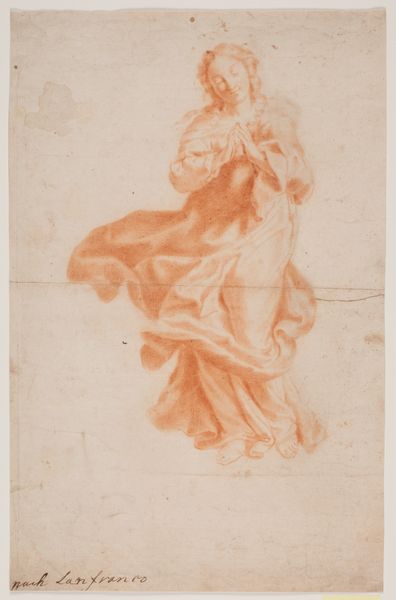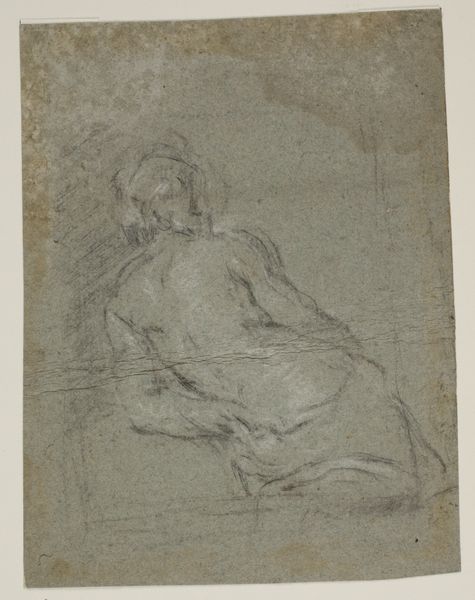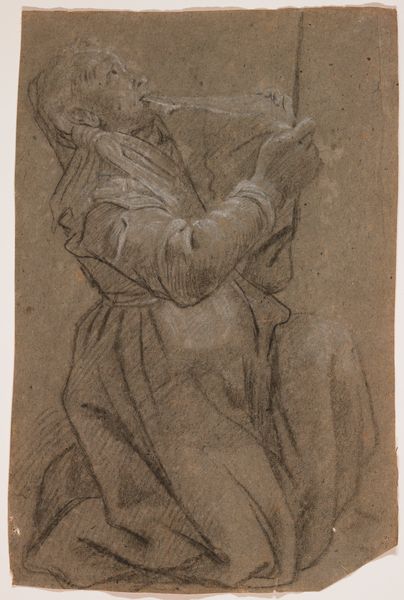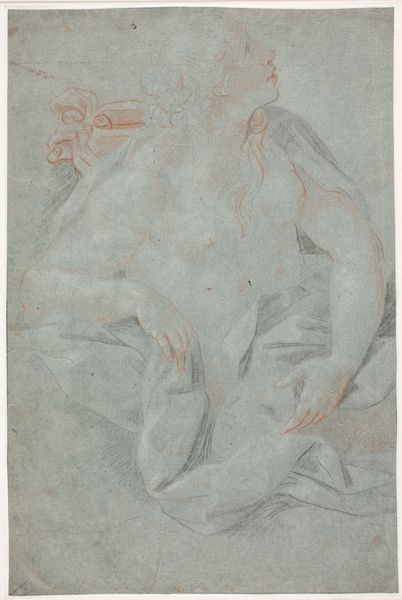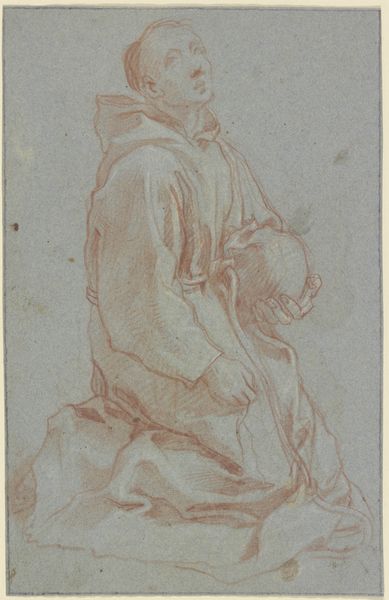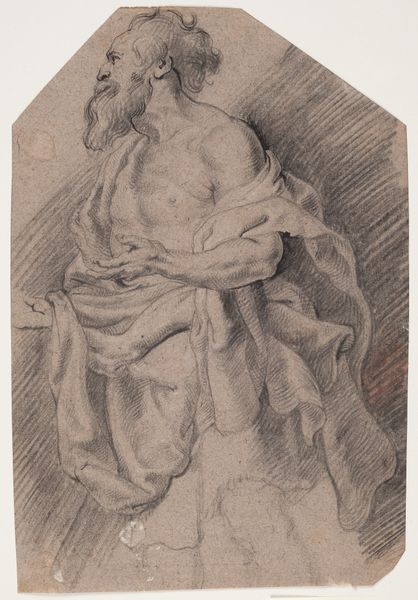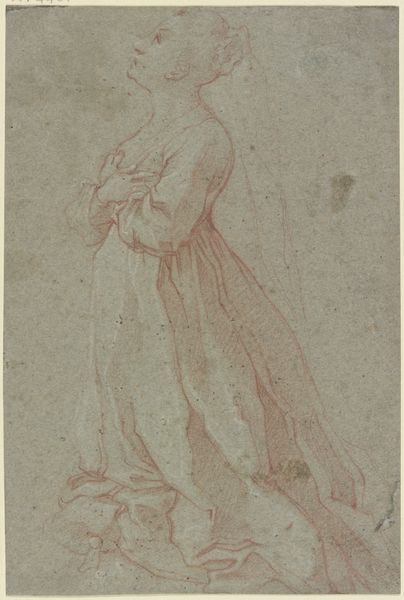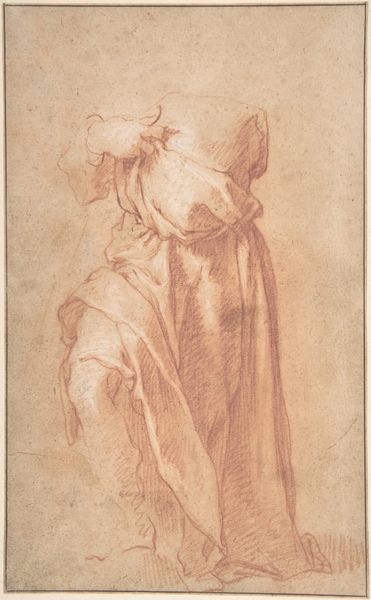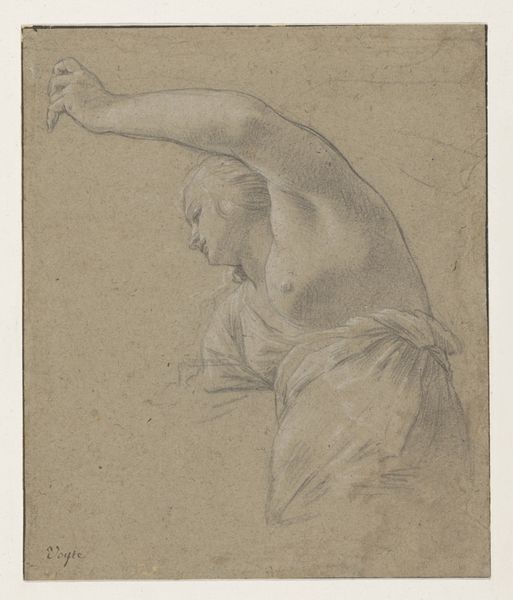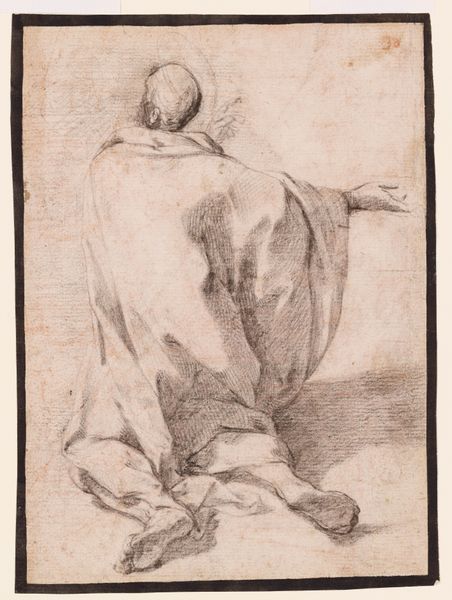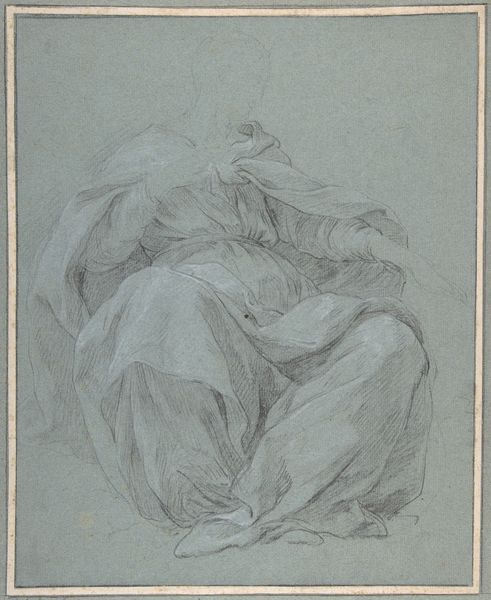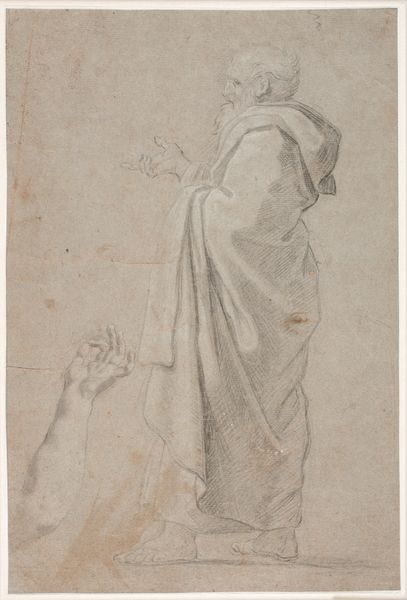
drawing, charcoal
#
portrait
#
drawing
#
baroque
#
charcoal drawing
#
genre-painting
#
charcoal
Dimensions: 5 3/16 x 4 in. (13.18 x 10.16 cm) (sight)13 7/8 x 11 1/2 in. (35.24 x 29.21 cm) (outer frame)
Copyright: Public Domain
Editor: This is "Seated Boy," a charcoal drawing by Jan Both from around the 17th century. I'm struck by the almost dreamlike quality of it. The boy seems lost in thought, or perhaps simply exhausted. What sort of cultural context can illuminate what’s captured in this drawing? Curator: This seemingly simple image actually resonates with quite a few potent symbols. The figure of the boy, rendered in charcoal, presents us with an intriguing dichotomy. In Baroque art, the seated figure is often associated with contemplation or melancholy. Charcoal itself carries the weight of ephemerality, something sketched to then perhaps fade or transform. He doesn’t make eye contact; he seems turned inward. What feelings does his pose invoke? Editor: Definitely a sense of vulnerability, but also a quiet dignity. He’s not posing for anyone. It feels very genuine. Do you think that interpretation has changed over time? Curator: I believe so. For a contemporary audience familiar with images reproduced ad infinitum, that quietness might appear passive. Yet, considering the period, it suggests something deeper. The very act of depicting a child outside formal portraiture, outside the strictures of court, represents an engagement with the psychological space of childhood that would likely resonate within Dutch Golden Age values that honored a slower life, contemplation and quiet. Editor: That's fascinating. I hadn't thought about it in terms of childhood itself being a subject. It makes the image much richer. Curator: Exactly. The symbolism shifts depending on where and when we’re looking at it. Today we value childhood as distinct and worthy of observation; this drawing marks an important transition toward it. Editor: It sounds like there is still so much left to think about when approaching historical works like this one! Curator: Always, with art we learn as much about the present as we do about the past.
Comments
No comments
Be the first to comment and join the conversation on the ultimate creative platform.
